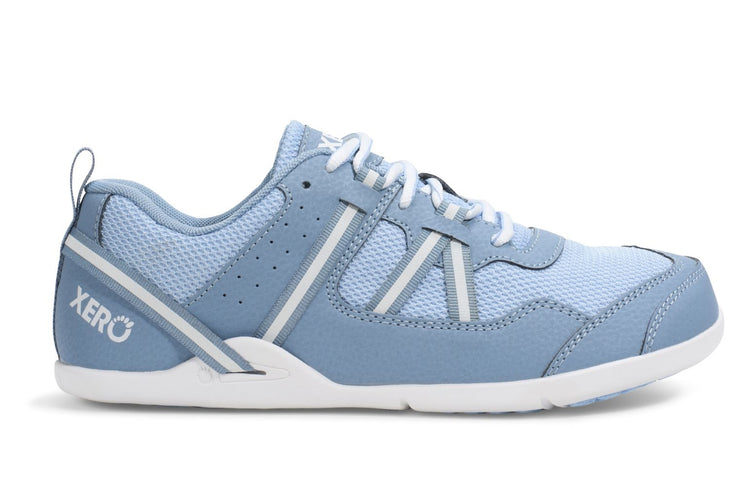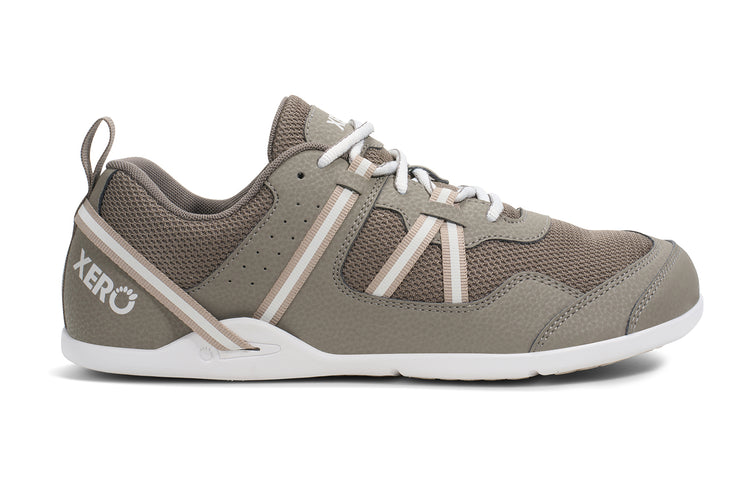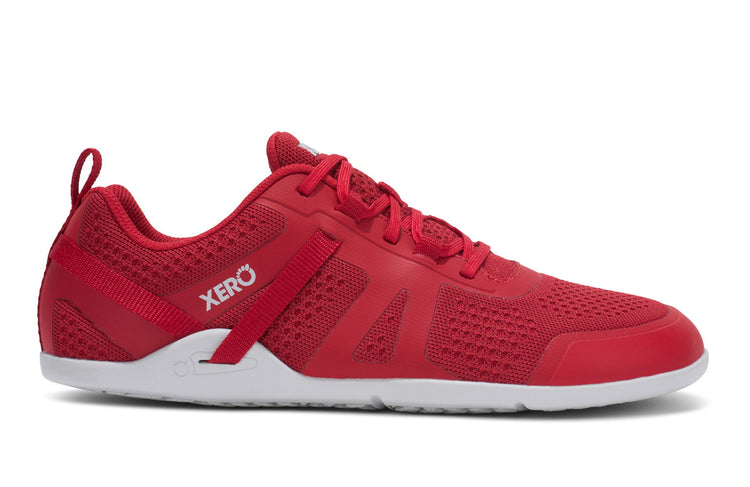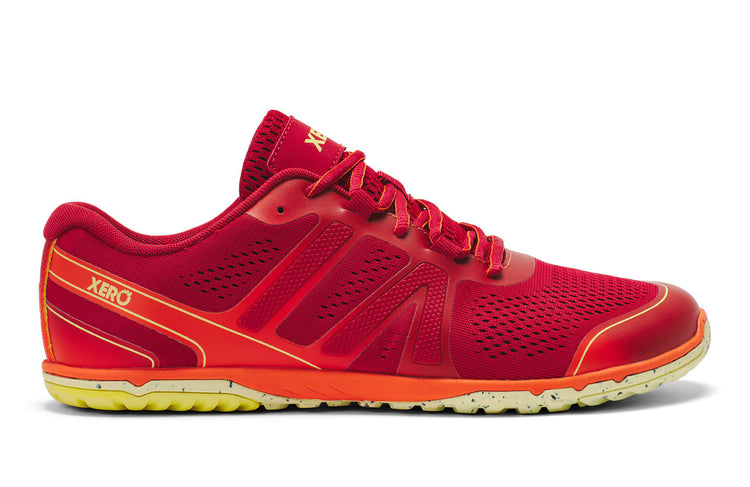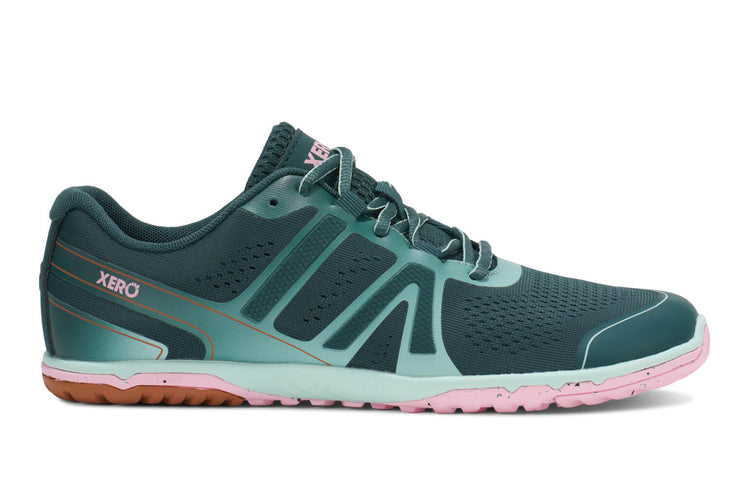latest News

Do you have the Barefoot Personality?
Birds of a feather may flock together, but do barefoot runners flock as well... psychologically, at least?Nicholas Hanson and Janet Buckworth think they might, as they describe in the paper they've published in Sport Sciences for Health, "Personality characteristics of barefoot runners: openness and conscientiousness as the defining traits"They put 692 runners through The Big Five Inventory, a psychological typing system. 238 of those runners identified as barefooters who'd done at least a half marathon in the last 2 years.Turns out, they say, that barefoot runners...tend to be more open (imaginative, unconventional, curious) and less conscientious (responsible, dependable, orderly) than shod runners.Think that describes you?You can take the Big Five test and see... there are lots of sites that offer it (click here for search results)(and, no, if you don't fit the mold that DOESN'T mean you can't run barefoot!)

Football leads to concussions. Does running lead to "foot concussions"?
Can you guess what these two athletes have in common? On your left, John Krahn. Seven feet tall, 440 pounds. On your right, Jessica Trengove, 5'5", 115 pounds.Have you guessed yet?The answer is as far on opposite ends of the athletes themselves as the athletes are far from each other in stature.Here's a hint: Krahn's head... and Trengove's feet.The answer: FORCE.Football players send a LOT of force through their helmets and into their heads, leading to concussions. Check out the Will Smith movie, Concussion, for a revealing look into this phenomenon.Runners send a lot of force through their shoes, into their feet, ankles, knees, hips and back, leading to all manner of joint injuries. I think we should start calling these "foot concussions."The "solutions" offered to both athletes has been the same for decades: more and more padding, shock absorbing technology, high-tech materials to handle the high-impact forces.And I put the word solutions in quotes because none of these interventions have eliminated, or even reduced, the problem.But barefoot runners have been offering a solution is for both athletes:To reduce injury, runners should take off their shoes. Football players should take off their helmets!Harvard's Daniel Lieberman showed how removing your shoes can lead to running form changes that reduce force through your joints. How does this happen? Because the form you adopt when running in padded footwear, ironically, puts MORE force through your joints. When you try to run barefoot with a "shoe wearing gait," it HURTS... and so, to avoid the pain, you'll learn to run with a gait that, instead of relying on footwear padding, uses the natural shock absorbers built into your body -- your muscles, ligaments, and tendons.(BTW, most "minimalist" shoes have enough padding that you don't get the form-change inspiring feedback. That's why Xero Shoes use our FeelTrue® rubber to give you just-right protection.)Well, this just in from the "No surprise" category: "Helmetless-tackling training intervention reduced head impacts in collegiate football players within 1 season."I know you'll find this screamingly obvious, but when football players take off their helmets so they can no longer use their heads as the front end of a battering ram, they naturally stop this concussion-causing behavior.Duh!So the REAL solution seems obvious. Why aren't people rioting in the street for the eradication of helmets and 2" thick padded running shoes?I think there are two reasons, inertia and vested interests.By "inertia" I mean that we've now had more than 2 generations of "we need better helmets/shoes." That's enough time to inculcate the idea that "more = better." It takes time and effort to get people to stop believing "common wisdom" and change directions. It's not easy to make a big boat do a U-turn. It took almost a generation to reduce the incidence of smoking after it was proven that smoking is bad for you.Vested interests? Well this one's easy. Big companies are making billions of dollars on head-smashing football games and on foot coddling running shoes. Billion dollar companies would rather argue that they're correct -- in the face of glaring evidence to the contrary -- than say, "Wow, we've had our heads totally up our butts for the last 40 years and caused you all a TON of injuries. Sorry 'bout that!"This is why any seeming "pro-barefoot" news is immediately jumped on by shoe companies, and why any news that could possibly be spun into "anti-barefoot" is, well, spun like a top, regardless of the facts. For example, shoe companies jumped on the class action lawsuit against Vibram as "proof" that barefoot is bad for you, when neither the suit itself or the fact that the lawsuit settled for essentially pennies, suggested anything of the sort.What to do?I wish I had a great answer, since getting people into footwear that supports natural movement and ground feel is our company's and my personal mission.I guess I'll start by attending football games the same way I attend every day of my life: barefoot or in Xero ShoesThe content of this post does not constitute and is not intended to be a substitute for professional medical advice, diagnosis or treatment. Always seek the advice of a physician or other qualified health provider with any questions or concerns you may have about your health or a medical condition.
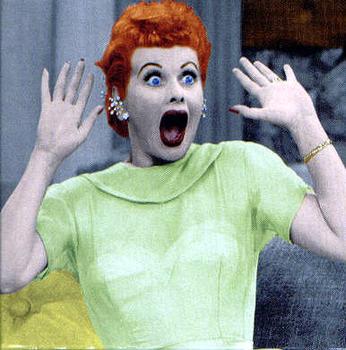
Bernard Lagat Won't Run Barefoot?
This just in from the "WHAT A SHOCK... NOT" category:Runner who gets paid millions from shoe company says he won't run barefoot!In an interview with The Guardian, Bernard Lagat, the Kenyan-American 13-time medal winning middle- and long-distance runner, is asked by Kate Carter:So, um, ever run barefoot?Bernard's response:[Laughs] Well, since I came to the developed world I’ve never run barefoot and I always say there’s no way on earth I am ever going to run barefoot. I did a good 15 years or so of barefoot running, walking. Now I see the shoes and I’m like, “That’s my best friend for life!” Never since I crossed the big pond! My shoes will always be on my feet for ever.Now let me see if I get this straight. A guy who gets paid millions from his shoe company sponsor will never go barefoot again.Let's say the guy really does simply love his shoes. Here's the question that Kate should have asked as a follow up:Bernard, do you think that 15 years of running barefoot helped you in some way, like improving your form and eliminating overstriding, or strengthening your feet and legs, or teaching you to adjust your gait and cadence, or improving your reflexes or sensorimotor skill? And please answer as if whatever you say will not be read by the shoe company that has helped make you a millionaire.Frankly, I couldn't care less what Bernard thinks or believes about running barefoot. The guy is one of the best middle- and long-distance runners ever. By definition that makes him a freak, an outlier.I'm not sure that a 5'8" guy who weighs 134 pounds and runs 1500 meters (just shy of a mile) in 3 minutes, 26 seconds, is someone whose experience extrapolates to normal humans.Be that as it may, what really gets to me is the headline:Bernard Lagat: 'There’s no way on earth I am ever going to run barefoot again!'Out of all the interesting and provocative and useful things Bernard said, I'm sort of dumbstruck why this became the headline. It's not like the world is FULL of barefoot runners who will be impacted by Bernard's thoughts. There aren't even a gaggle of runners on the fence about running barefoot who will see the headline and think, "Thank God I know Bernard won't run barefoot; now I don't have to either!"It's a headline that is only attention-grabbing to a small number of humans. So why all the fuss?I'm sure it had nothing to do with Bernard being sponsored by a shoe company that makes money every time some runners sees him in their shoes, and who is featured in the photograph at the top of the article (shown below so you know who it is).
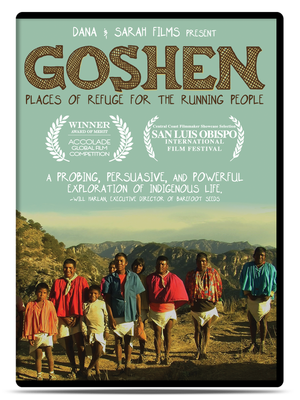
GOSHEN Movie Trailer - Watch it here!
As many of you know, Xero Shoes were inspired by the Tarahumara of Mexico. First, we were inspired by their story of running enjoyably and injury-free into their 70s and beyond.Then we were inspired by the fact that they ran barefoot or in huaraches -- sandals they made out of scraps of tire and leather.The Tarahumara are also facing serious challenges. A long-running drought, problems with local drug cartels, inaccessibility, medical problems.For all of these reasons, we support the Tarahumara with a percentage of the sales of our custom-made Xero Shoes.And to further support the Tarahumara, we're thrilled to share the documentary GOSHEN with you. Filmmakers Dana Richardson and Sarah Zentz's movie, GOSHEN, reveals how the Tarahumara tribe's ancient diet and active lifestyle could not only transform your personal health and fitness, but may be the key to preserving Tarahumara culture as well.Watch the trailer, below. Own the GOSHEN DVD Today!
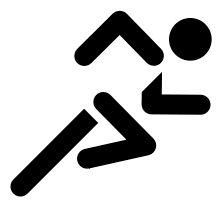
National Runner Survey 2014
Calling all RUNNERS!What motivates you to run? What is your favorite race distance? How often do you run?You are being invited to participate in Running USA’s National Runner Survey, a comprehensive survey to assess the demographics, lifestyle, attitudes, habits, and product preferences of the running population nationwide.The National Runner Survey is easy to access and available online. All responses are completely anonymous and confidential.Don’t miss this opportunity to join other runners nationwide!To access the survey, click here:https://www.research.net/s/NRS15_XeroShoesSelect Xero Shoes as the organization that invited you to participate.The survey is open until December 15, 2014.
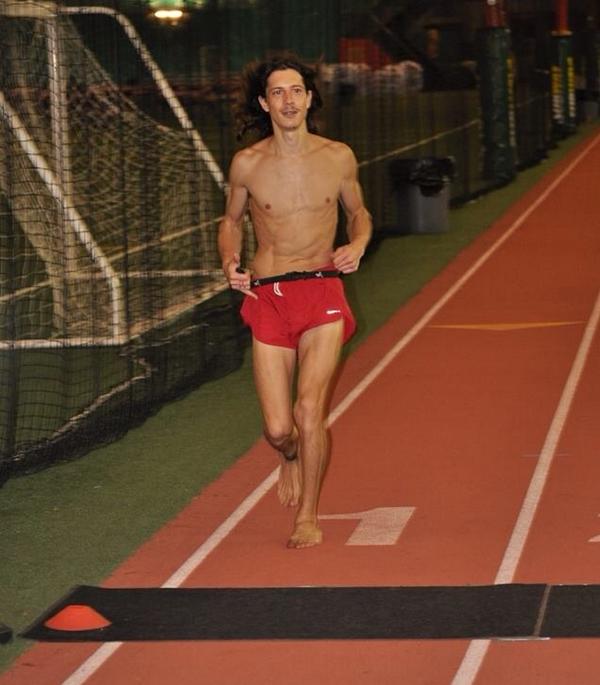
24 Hour Barefoot Running World Record
If you bump into someone who opines, "You can't run in bare feet!" show them this.Andrew Snope ran 131.43 miles, barefoot, in 24 hours!Yup. Ran for 24 hours (with just a few bathroom breaks). Did it barefoot.And if that same opinionated person counters with, "Yeah, but the world record is 188.59 miles from a guy wearing shoes," you can reply with, "But Andrew's only been a runner for 3 years, and he wasn't trying to beat the record. Geez!"We say a big congrats to Andrew and can't wait to see what he does next!

Is barefoot running really BS?
Marc Lindsay recently posted what I'm sure he thinks is a scathing critique of barefoot running at Active.com called "Why Barefoot Running is BS." Sadly, it's not the well-researched, well-considered investigation I think he believes it to be. In fact, given that the top of the article clearly says "Sponsored by Brooks," one has to wonder if this anti-barefoot running article isn't just a piece of shoe industry propaganda. In fact, check out this amazing expose on "native ads" by John Oliver Now it may be that Marc is completely unaffected by his sponsor, but even if that were the case, his article is such an incredible demonstration of faulty reasoning and bad logic, that I found myself compelled to write a rebuttal that's longer than his original article! You can read the article and come back here to read my response, or you can just start here and I'm sure you'll get the picture ;-) Marc,Before I address specific points in your article, I have to ask: is this actual reporting, or a “native ad” for which you were paid to write an anti-barefoot article by the shoe company Brooks? I ask because in the upper right corner, opposite the breadcrumbs, I see “Sponsored by Brooks.” Let me start, now, with a few broad strokes. You begin your article with a false equivalence. Ignore for a moment that if research showed that naked running did improve running performance, contrary to your assertion, you would have a rash of Naked 5k races and whole new nude Olympics. Comparing your example of “you heard naked is better,” to “you heard barefoot is better” is an inaccurate comparison, since the claims about barefoot aren't as unsubstantiated as you would like to believe. You don't recognize this, though, due to a number of other errors in your reasoning. For example, you repeatedly conflate barefoot and minimalism. This is common in both anti-barefoot running articles, advertisements for minimalist footwear, and running research. However, no accomplished barefoot runners or coaches that I know have ever stated that running in minimalist shoes is the same as running barefoot. You've even conflated Tarahumara runners with both minimalism and barefoot. Even though the Tarahumara often do run barefoot, and are tightly linked to the barefoot idea, the reality is that they spend more time in huaraches than they do barefoot. And the huaraches they wear are thicker, heavier, and stiffer than any running shoe you've ever seen. They're practically rubber bricks. Why the Tarahumara are interesting is not their footwear, or lack thereof, but their running form, which we'll address in a moment. As a minimalist footwear seller, I'm the first to admit that even running in Xero Shoes (@xeroshoes), which are just a few millimeters of rubber between you and the ground, is not identical to being barefoot — while a pilot study showed that runners in Xeros have identical biomechanics compared to when they're barefoot, feeling the same surface — the rubber — with each step is not the same as the feedback you get from stepping on a continually varying surface. Next, you make the common mistake of claiming that a lack of scientific evidence for barefoot running's value is proof that there is no value. This is another common error in logic. Up until very recently, there was no proof that the Higgs Boson existed, but that didn't mean it didn't exist. There were valid reasons to think it did, and once adequate research was performed, it was discovered. Similarly, the arguments made in favor of running barefoot — valid hypotheses about physics and physiology made by well-respected researchers as well as by long-time practitioners — simply haven't been well-tested. A careful look at most barefoot research, both pro- and con-, shows common problems with study design — small samples sizes, poor control groups, poor sample selection, and potential bias since most studies are funded by companies with a vested interest in the outcome. I've seen studies where the “barefoot runners” being studied are people that I know — people who have never run more than a few hundred yards on a paved road without shoes. Backing up to conflating barefoot and minimalist and thinking them equal, let's go back in time a few years. If you look at the barefoot movement from 2009 until now, you see that the shoe companies began by dismissing any possible value of barefoot running at a time when they had no product to sell into the barefoot market. Nike, of course, is an exception since they had the Free available. Shockingly (and I say that with 100% pure sarcasm), once the shoe companies had products they felt were “closer to barefoot,” the conversation changed. The major shoe companies adopted the language of barefoot running, and the claims that barefoot runners and researchers have made, applying them to products that no barefooters endorse. In fact, most minimalist shoes are so far from being genuinely minimalist, they've rendered the term meaningless. If you look at the ACSM's suggestions — zero drop, minimal stack height, no arch support, wide toe box — and go look at shoes sold as “minimalist,” you'll be hard pressed to find any that fit the bill. Instead you'll find products that have up to 1” of padding, narrow toe boxes, narrow midfoot areas with significant arch support… or some combination thereof. So, your repeated criticism of minimalist as if it were the same as barefoot, and vice versa, is moot. By the way, an example of this conflation is when you refer to the Vibram lawsuit and then say, “And the plaintiff wasn't alone in his claims,” and then quote the American Podiatric Medicine Association's position about barefoot running. The APMA's comments are totally unrelated to the Vibram case, and are about running barefoot, not in minimalist shoes. More, referring to the APMA is merely an appeal to authority. That is, just because they're an official organization it does not, because of their position of authority, mean their opinions are factually accurate. Even the seemingly obvious statement that running barefoot increases your chances of a puncture wound is baseless and incomplete. For that statement to have merit, there would have to be data about puncture-related injuries in shod vs. barefoot runners presented in a meaningful fashion (e.g. it's meaningless if the actual data shows a 100% increase because there was 1 reported puncture would in a shod runner, and 2 from barefoot runners). Next, looking at the claims of barefoot running, you've fallen into another familiar trap, a straw-man argument about the benefits of barefoot. I've yet to find a barefoot runner or researcher who claimed that barefoot was more efficient than shod running. Yet, somehow this “claim” has made the news, often when research done by shoe company-sponsored labs seemingly shoot it, and the straw-man, down by apparently showing that barefoot runners have a higher VO2 than shod runners. Ignoring for a moment that less efficiency does not equate to decreased performance and that most casual runners would never notice the statistically tiny difference in VO2, when you look at the “barefooters are less efficient” studies, you find that it's people who are new to barefoot that are less efficient. Competent barefoot runners are equally efficient. In other words, and not surprisingly, someone who is learning a new way to move uses more energy than when they use their habitual movement patterns. Tangentially this is another hole you've fallen into, where most media also stumbles: not evaluating the source data. Pete Larson, of runblogger.com, has been the most thorough at highlighting the disparity between actual research results and the way those results are misrepresented by the media. Sadly, once one media outlet says, “Barefoot is bad for you” by misunderstanding a study, that meme spreads like, well, Internet memes spread — unchecked and unquestioned. Next, you make a familiar mistake by looking at injury rates out of context. Barefooters do make the claim that running barefoot is safer, that you're less likely to get injured without your shoes. Before you scream from the rooftop that “barefoot running will hurt you,” by quoting statistics, you need to consider three things: the current rate of shod running injuries; the causes of what are called “barefoot related injuries;” and the simple claim by those injured that barefoot running was the cause. First, you can't hold barefoot to a different standard than shod running. Fifty percent of shod runners and 80% of shod marathoners get injured every year. And this number hasn't changed since the introduction of modern running shoes in the early 70's. In over 40 years, there has never been one study showing that modern running shoes are in any way better for you. Not one study showing that a particular style or model of padded, motion-controlled shoes reduces injuries or even improves performance compared to another. Considering that the running shoe business is a multi-BILLION dollar industry, you would think it in the best interest of any shoe company to prove that their latest “improvement” in padding, “energy-return” (i.e. “sucking less energy out of you”), or pronation control was reliably proven to be better than any other product. If well-designed research showed actual benefits of one shoe over another, that would be worth hundreds of millions of dollars. So the fact that there's no research showing any such thing seems to suggest a lack of “there” there. So the fact that barefoot runners get injured is meaningless unless you compare the injury rate to shod runners. Unfortunately that doesn't mean you simply count the number of barefoot runners who've gotten injured, because this leads to another confusion demonstrated by your article. No knowledgeable barefoot runner or coach thinks that the value of running without shoes comes from simply removing your shoes. None in that group suggest that merely removing your footwear is a panacea or solution to all running problems. What we say is that running barefoot is a way, perhaps the best way, to make changes in your running form that lead to fewer injuries and a reduction of impact forces. The specifics of this form tend to include: landing with the foot closer to or under the center of mass, with a forefoot or mid-foot landing, with a typically increased cadence (190+/-10) that helps reduce ground forces, and by lifting the foot off the ground through hip flexion rather than pushing off the ground with by plantar flexion. All of these reduce the “impact transient” force that Daniel Lieberman famously documented, which reduces loading forces through the joints. Can you learn this in minimalist footwear? It's possible. But, anecdotally and logically, it seems more difficult due the reduction in feedback/sensations one gets wearing that footwear. In an informal study I did at Colorado Mesa University, I watched even accomplished barefoot runners unknowingly revert to heel-striking and over striding when they put on minimalist footwear (though, I'm proud to say, not when wearing Xero Shoes). Again, those of us who endorse barefoot running claim that most, if not all, injuries are a result of improper barefoot form, often received during the learning phase of this new running form. And anyone who teaches any movement pattern will tell you that this is the most likely time for injuries to occur. I've often seen new barefoot runners who hear “land on your forefoot” make the mistake of reaching out with their foot, pointing their toes, and landing on the balls of their foot. This is completely at odds with the first instruction — land with your foot under your center of mass — and gives the runner an increased likelihood of stress fractures (an injury common to those in running shoes, let's not forget). Next, just because someone claims they “got hurt barefoot running,” doesn't mean that, well, they got hurt running barefoot. Given the confusion in the marketplace, where millions have been spent to conflate minimalist footwear with being barefoot, and in articles like yours that do the same, many runners who've never had their bare skin touch the ground will mistakenly self-identify as “barefoot runners.” This may be especially true among those who wear FiveFingers shoes since the design of the product suggests being barefoot more than any minimalist shoe. But just because your footwear looks like a foot, that doesn't make it “barefoot.” And since we believe that the form changes that reduce injury are best accomplished by running without footwear, the fact that minimalist runners who call themselves “barefoot” renders the data suspect, at best. Later, you confuse Dr. Gruber's research with the question of whether one should wear minimalist shoes. Her research suggests that running efficiency is unrelated to foot strike patterns. But when you then use that data to say recreational runners have little to gain by wearing minimalist shoes, you're implying that merely wearing minimalist shoes changes your gait. Aside from the fact that there's no evidence of minimalist shoes — again we're not talking about barefoot — lead inevitably to gait changes, if there's no difference between the two gait patterns, it wouldn't matter if someone switched! You also make another common mistake when you suggest that running in Mexico and Kenya is nothing like running on asphalt roads. First, many Western runners run trails. Secondly, many of those remote trails are barely, if any, more forgiving than a paved road. This is a version of the naturalist fallacy, where the idea that the “natural” world is radically different from the modern world and, even more, better because of it. Then you misunderstand the entire premise of barefoot vs. shod running when you say that removing “the only thing that absorbs some of this impact” is “comical.” If you look at the research, including but not limited to Lieberman's, what you find is the exact opposite of your “joke,” namely that by removing padding your gait changes and you use your muscles, tendons, and ligaments as the natural springs and shock absorbers that they are… and, in doing so, reduce the impact forces. And again you then conflate barefoot and minimalist when you say “You know that running 3 miles with a pair of minimalist shoes on pavement feels like a 20-mile run in a pair of cushioned shoes.” Let's ignore for a moment that perhaps millions of people who've adapted to the gait pattern described above would disagree with you and find that running barefoot or even in minimalist shoes is less stressful than being in padded shoes. To reiterate an earlier point, the problem with minimalist shoes is that for most, they don't engender the gait change that makes running long distances on hard roads a pleasure. Finally, I'd like to editorialize a bit. I'm mystified by the tone that I can only categorize as glee in most anti-barefoot articles, including this one. I would hope that all of us involved in the running world share a simple goal helping more people enjoy injury-free running. To that end, the value is in carefully examining research and, in lieu of research, anecdotal information (remember the phrase “carefully examining” when looking at anecdote) and the basics of physics and physiology. I agree with your final point that improvement will only come through effort. Sadly, though, you are once again tilting at windmills and attacking straw men. Those of us who endorse barefoot running say the same thing. We don't say that merely removing your shoes is the answer. And we certainly don't say that swapping one shoe for another is the answer (which, again, you repeatedly imply). And we don't even say that everyone needs to be barefoot, especially under all conditions. I'm a competitive sprinter — I wear spikes to race. What we do say is that if you choose to put in the time and effort to see why we say that barefoot running offers an unmatched level of fun and freedom, we expect you'll be glad you did. And we hope (and, frankly, expect) that the future brings a well-designed, unbiased study that backs us up. What do you think? Share your comments here, then go to Marc's article and tell him what your experience has been. BTW, I tried posting my response to Marc's anti-barefoot running article on Active.com, but the site wouldn't let me :-( The content of this post does not constitute and is not intended to be a substitute for professional medical advice, diagnosis or treatment. Always seek the advice of a physician or other qualified health provider with any questions or concerns you may have about your health or a medical condition.
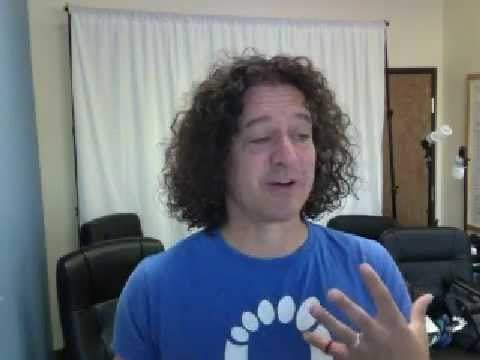
Barefoot Running Q&A - Transitioning, pain, and cold weather
Here's another Barefoot Running Q&A video, where I take an email I've received and give an answer on video.In this video we look at the relationship between barefoot and minimalist shoes, foot and calf pain during the transition to barefoot, how minimalist shoes fit in with the transition to bare feet, and how to handle the cold.Some of the links you'll want to take a look at:Transitioning to Barefoot RunningIs Calf Pain NecessaryDealing with "top of foot pain."Barefoot running and cold weather
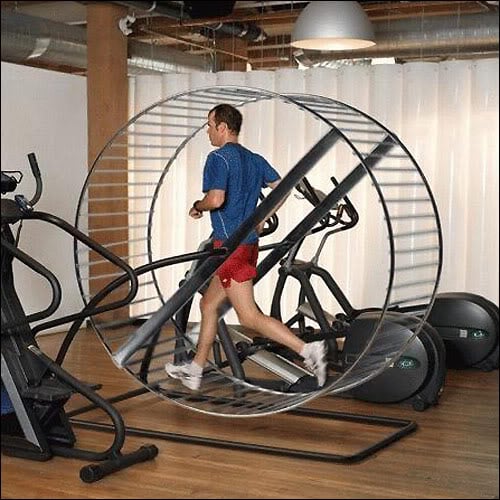
Is running in our DNA?
One reason scientists study mice is, much as we may not want to admit it, we have a lot in common with our rodent relatives.We share enough DNA and physiology that studying mice often reveals quite a bit about us humans.So, does this recent study from Leiden University explain why many of us like to run?In short, neurophysiologist Johanna Meijer set up a running wheel -- yes, the kind you would put in a mouse, or rat, or hamster cage -- in her backyard and, after enticing animals to come near with the help of some food, watched that they ran on the wheel. Not to get the food. Just to run.Wild mice would often come back and run as much as caged mice -- mice who usually have nothing else to do -- would.As Emily Underwood says of the study,Rats, shrews, and even frogs found their way to the wheel—more than 200,000 animals over 3 years. The creatures seemed to relish the feeling of running without going anywhere.Maybe this tells us why we like to run.Or maybe it just explains treadmill sales ;-)

Daniel Lieberman studies the Tarahumara running
Dr. Daniel Lieberman is one of the fathers of the barefoot running movement. His study showing how barefoot runners strike the ground with less force than shod runners, combined with Christopher McDougall's book, Born to Run, catalyzed the growth of barefoot and minimalist running. Well, it's as if Dr. Lieberman had a child with BTR, since his new study looks at how the Tarahumara run. And, more, it compares Tarahumara runners in huaraches to younger Tarahumara who run in padded running shoes. You can read the study for free here. Before I talk about what the study reveals (and what it doesn't), let me address a myth about barefoot running...Barefoot Running Myth #1One of the myths of barefoot running is that there is ONE WAY to do it: Your foot hits the ground in a certain way, you move your legs at a specific speed, you hold your arms in one configuration, and you run long, long distances. Hogwash, I say (as if I lived in the 30's). There's actually quite a bit of individual difference among competent barefoot runners, even though a few concepts are consistent. The problem with this myth is that it interferes with one of our brain's favorite hobbies, namely:The Brain's Favorite HobbyBrains like to know how things work. They like patterns. They like consistency. Oh, they're fascinated by the novel and new, but when it comes to survival, they like to know the rules. See the problem? When we want to learn something new, like how to run barefoot, we want to know "What's the one way I should do this? Show me a video I can imitate. Give me the rules." But, as I just said, there's not ONE way, there are variations of a theme.We now return to our regularly scheduled programAnd this brings us back to Lieberman's study. He finds some real variation in foot strike patterns among the huarache-wearing Tarahumara.40% primarily using midfoot strikes, 30% primarily using forefoot strikes, and 30% primarily using rearfoot strikes.70% land in a way that's consistent with the bigger picture of barefoot running, namely, don't land on your heels. But 30% DO heel strike! "How could they possibly rearfoot (or heel) strike?" you may ask. There are a couple of answers/comments: Footstrike isn't everything. Just because their heel touches the ground first, that doesn't mean they're putting extra force into their bodies by doing so. Which part of your foot touches the ground first doesn't always tell you everything you need to know. It's possible to have your heel contact the ground first but, because of your speed and where you place your foot in relationship to your center of mass, not apply force into the ground until your midfoot hits. So you could look like a heel striker, but apply force like a midfoot striker. Traditional huaraches are thick and stiff. If you haven't held a pair of huaraches made from tires and leather, you'll be in for a shock when you do. They're heavy and stiff. They reduce the amount of feedback you get from the ground... on purpose. Some of those Copper Canyon trails are seriously pointy, pokey, sticky. So it may be that some Tarahumara heel strike because they don't get the same feedback -- pain -- that one would get running barefoot. Traditional Tarahumara Huarache -- thick and stiff So don't get hung up on the fact that 30% of the Tarahumara that Lieberman studied heel strike. But also don't think, "Well, if they can do it, so can I!" More about that later. Next, Lieberman pointed out:In contrast, 75% of the conventionally shod Tarahumara primarily used rearfoot strikes, and 25% primarily used midfoot strikes.That's an interesting one: change the shoes, change the gait. I saw that when I was in Dr. Bill Sands' lab. Dr. Sands is the former head of biomechanics and engineering for the US Olympic Committee. He had hundreds of videos showing how the same runner will change their footstrike and, ofter, their entire gait, depending on the shoe they wear. That shod runners more often land on their heels isn't surprising to people familiar with barefoot running since we make the opposite argument: take OFF your shoes and your gait will change (over time and with some attention).What Lieberman's Study Does NOT SayLieberman looked at a number of other aspects of the gait of huarache-wearing and shoe-wearing Tarahumara: overstriding (the huarache wearers were less likely to do so), flexion of the joints (huarache wearers bend their joints -- use their springs -- more), and arch stiffness (huarache-wearers have stronger arches). Read the study to find out more. But what he does not say is just as important as what he does. He doesn't say "switch to sandals," or "midfoot or forefoot strike is better" or anything prescriptive. Lieberman is being especially circumspect about the meaning of the data he collected. This is, perhaps, a good thing, given how evangelical barefoot runners often take any seemingly pro-barefoot news as an excuse to have a shoe-burning party, which then backfires when any seemingly anti-barefoot news causes shod runners to chime in with "Nah-nee nah-nee, boo-boo" (or something equally insightful).Show me the moneyNote that I say "seemingly" for both pro- and con- news. That's because there still aren't any good studies that clearly demonstrate "Barefoot is better" or "barefoot is worse." And there are no studies showing "shoes are better" either, even though there has been 45+ years to whip one of those up, and many research labs are sponsored by big shoe companies. Those of us who've been living a barefoot or truly minimalist lifestyle now have lots of personal experience about the changes that can happen. And studies like Lieberman's hopefully provide more incentive for researchers find the cash to find out if we're unusual or if anyone who ditches their shoes can have the same kinds of expeiences (okay we know the answer to THAT, but you know what I mean ;-) ).The content of this post does not constitute and is not intended to be a substitute for professional medical advice, diagnosis or treatment. Always seek the advice of a physician or other qualified health provider with any questions or concerns you may have about your health or a medical condition.

Happy Born to Run release day!
May 5th is an important day in the barefoot running world. And, for the same reason, it's one of the most important days in the Xero Shoes world.What makes it so important?As Brian Metzler from Competitor.com reminded me, "Journalist Christopher McDougall’s best-selling book “Born to Run: A Hidden Tribe, Superathletes, and the Greatest Race the World Has Never Seen” hit bookstore shelves five years ago Monday—on May 5, 2009."Brian describes 11 ways that Born To Run influenced the running world, from simply being a really great read, to inspiring the growth of ultrarunning, to creating a number of great races, to inspiring people to run barefoot, to encouraging shoe companies to make minimalist footwear (of course, if you've read anything I've written, you know I think most "minimalist shoes" are as close to barefoot as a pair of stilts).The 12th way that Chris's book influenced the world is that it was one of the inspirations for Xero Shoes.If you've read Lena's and my story, you'll know how BTR inspired us. But, more, the success of the book created a wave that we surfed. Were it not for the millions of people who read BTR, Xero Shoes would have remained a goofy little hobby.Now, on days when we work 12+ hours, I sometimes long for those hobby times ;-) ... but given the thousands of people we've been able to help -- people who can now run or walk or hike enjoyably and pain-free -- and the fun we have when a new person discovers the fun of being able to feel the world when they're out and about, we couldn't be more thankful for this anniversary.Congrats again to Chris for his success. Thanks again to him for all he's done for ALL of us. And stay tuned and cross your fingers for the Born To Run movie!
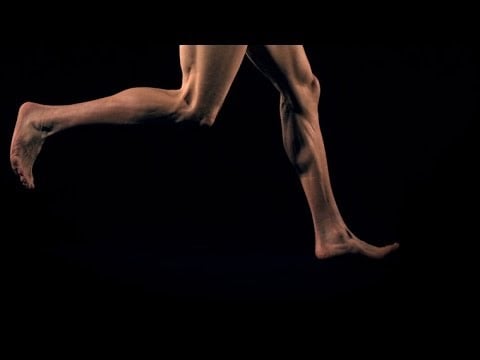
Is your body optimized for running?
Harvard's Daniel Lieberman is one of the two or three people most responsible for the barefoot running boom (Christopher McDougall, who wrote Born to Run, is another... you can vote for who the third should be).Daniel is an anthropologist and has some fascinating ideas about why the way humans run (and sweat) gave us such an evolutionary advantage.In this video he talks about some of aspects of human anatomy that suggest we were "made to run."I don't agree that you don't use your butt when walking. Rather, you can and, in my opinion, should walk with your glutes. In fact, if you use your glutes as the prime movers when you walk, you're more likely to not overstride and put too much force on your heels when walking. I talk more about walking, barefoot or otherwise, here.Now, I don't think that everyone must run. Some like it, some don't. And I don't agree that we're all meant to run long distance (Lieberman doesn't discuss that here, but it's something he and I chatted about). But it sure is compelling to see that we may be built so that we CAN run.What do you think?The content of this post does not constitute and is not intended to be a substitute for professional medical advice, diagnosis or treatment. Always seek the advice of a physician or other qualified health provider with any questions or concerns you may have about your health or a medical condition.



